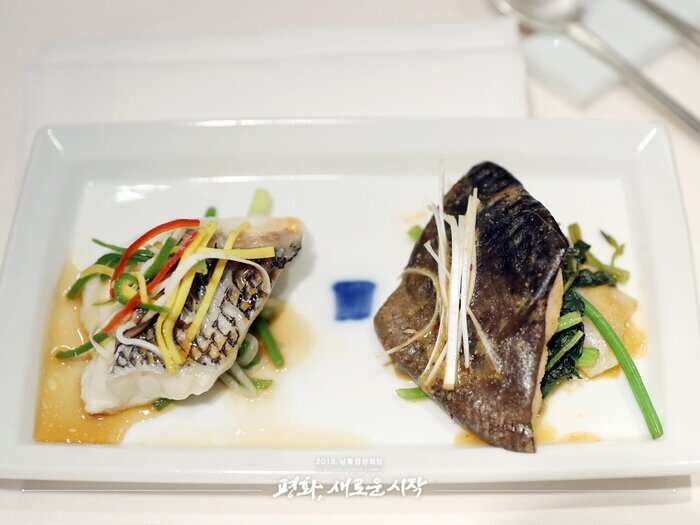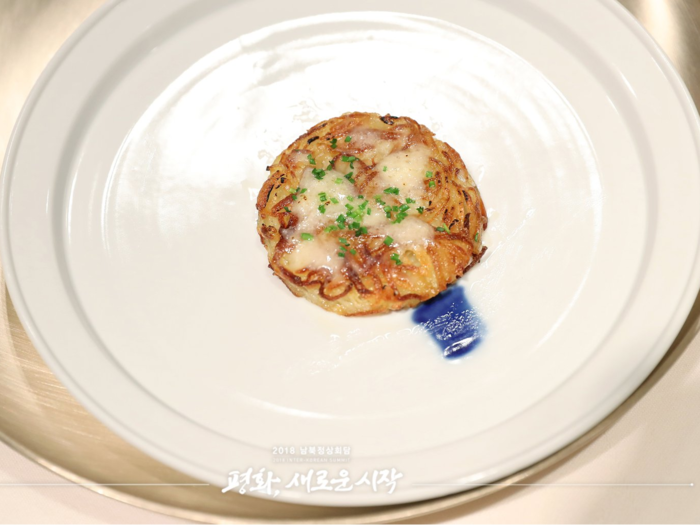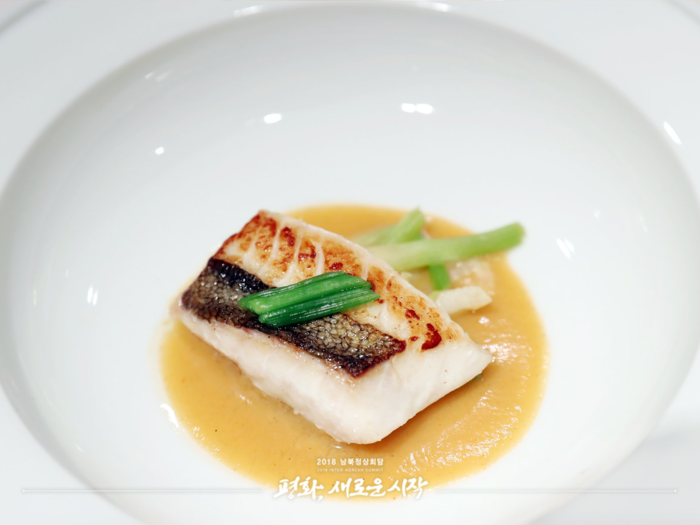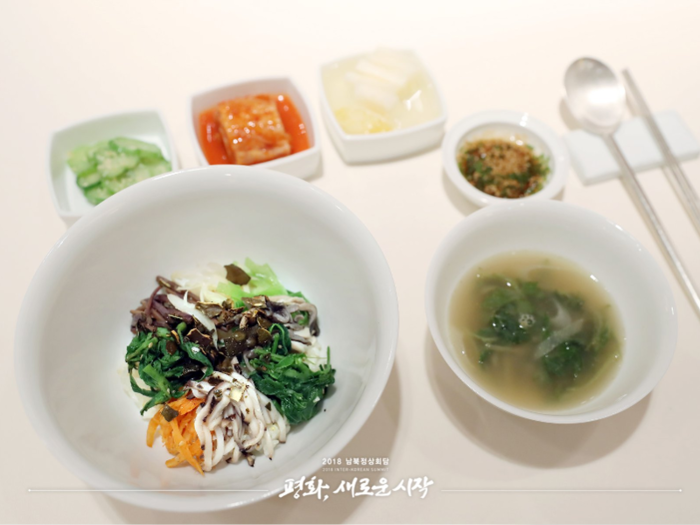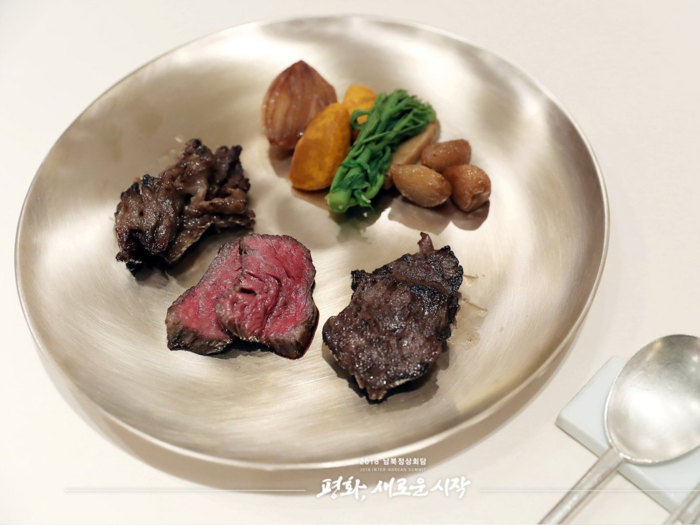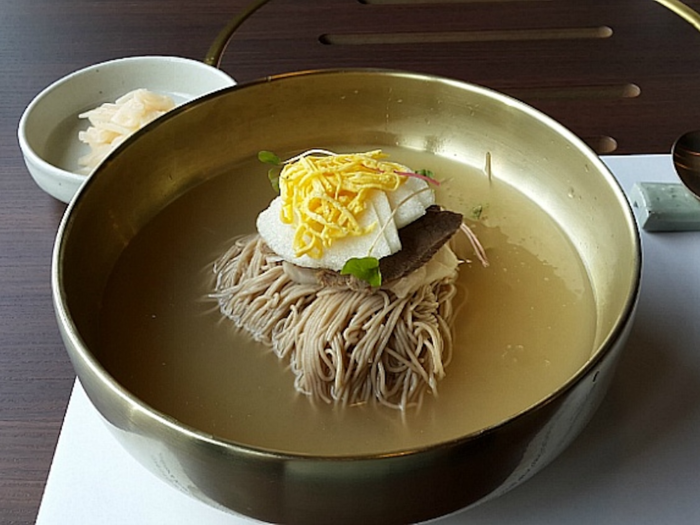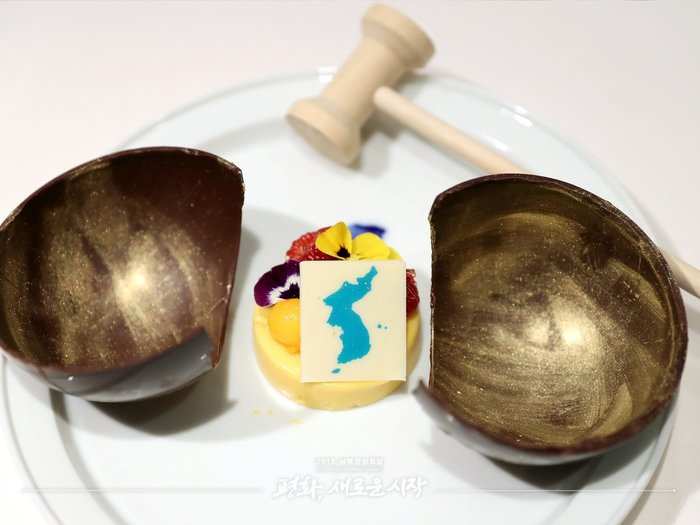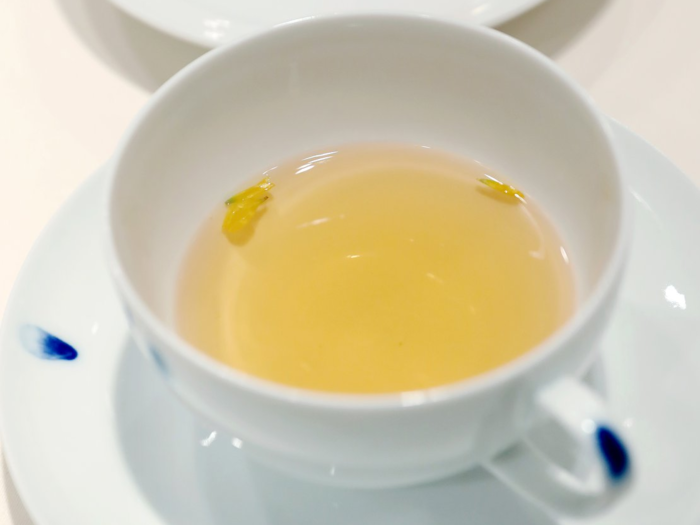Rosti — a Swiss dish consisting of fried grated potatoes, which the Blue House said may remind Kim Jong Un of his time in Switzerland, where he reportedly went to high school. This appeared to be the first official acknowledgement of Kim's time there.
North Korea has never confirmed reports that Kim Jong Un went to school in Switzerland.
"DMZ Bibimbap" made with wild vegetables, herbs, and rice from Biha village, where former South Korean President Roh Moo-hyun grew up. Roh chaired the second and last inter-Korean summit with Kim Jong Il in 2007.
Bibimbap, a traditional South Korean dish, is served as a bowl of rice topped with various food and sauces. Eaters are expected to mix the toppings into the rice themselves.
South Korea, which appears to be a fan of culinary diplomacy, also served bibimbap to Ivanka Trump when she visited earlier this year to "symbolise harmony."
Beef from the South Korea's indigenous Hanwoo cattle, which is known for its rich texture, high marbling, and slightly sweet taste.
Another dish not included in the Blue House's pictures is cold noodles, also known as naengmyeon, which North Korea is sending a chef from Pyongyang to make on the day of the summit with a special noodle-making machine.
The chef will install the special machine in Panmunjom and deliver the noodles straight to the banquet when he's done making them, the Blue House said.


